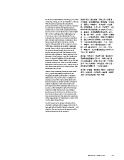Page 331 - Sotheby's October 3 2017 Chinese Art
P. 331
Basins decorated with this charming scene of fish 此梅花式盆,繪魚藻紋,別有意境。為匠者,
swimming amongst reeds provided the craftsman 畫技嫻熟,運筆瀟灑老練。漫漫荷塘,水波蕩
with the perfect opportunity to display his 漾,幾尾魚,栩栩如生,往來閒遊,自由歡
proficiency with the subject: the fish are depicted 暢。同類紋飾者,多見五彩,青花略罕。五彩
in a number of turning and twisting poses in 例可參考曾售於倫敦蘇富比1969年5月13日之
swirling water, successfully capturing the lively 器,編號95,其紋飾構圖與本品相仿,施青
movement. It is rare to find basins rendered with 花、褐、綠、墨彩。另比較一青花例,心繪鯉
this scene in underglaze blue although wucai 魚一尾,六小鱗相伴歡游,外飾八吉祥纏枝蓮
versions are more commonly known. For an 紋,藏台北國立故宮博物院,展於《福壽康
example sold at auction, see a basin enamelled 寧.吉祥圖案瓷器特展圖錄》,台北,1995
with a closely related design in underglaze blue, 年,圖版78。與台北故宮藏器相近之五彩
brown, green and black, sold in our London 例,見於《龍泉集芳》,卷1,東京,1976
rooms, 13th May 1969, lot 95. Compare a basin 年,圖版919,或售於倫敦蘇富比1987年12月
of this type, depicting six small fish swimming 15日之例,編號161。
around a large central carp in underglaze blue,
the exterior decorated with two lotus scroll 魚藻紋,宋畫常見,與道學之緣,根深蒂固。
borders interspersed with the bajixiang, in the 戰國時期道家經典《莊子》,錄寓言數十篇,
National Palace Museum, Taipei, included in the 常見以魚為題者。宋徽宗致力文藝,且又篤信
Museum’s Good Fortune, Long Life, Health, and 道學,時有名家劉寀,極善畫魚,傾心崇道。
Peace: A Special Exhibition of Porcelains with 此時期各門御廠官作,常見道家紋飾。
Auspicious Designs, Taipei, 1995, cat. no. 78; and
its wucai counterparts, such as one illustrated in 池中魚,逍遙遊,無拘無束亦無憂,正如道學
Mayuyama. Seventy Years, vol. 1, Tokyo, 1976, pl. 教義,宣揚自然,崇尚歸真。為君難,困俗世
919; and another sold in our London rooms, 15th 凡間,恰可借此紋飾,略了其憾。
December 1987, lot 161.
Scenes of fish swimming amongst water reeds
was a popular ink painting subject from the
Song dynasty (960-1279) and its association
with Daoism is known from the compilation of
Zhuangzi, a text with origins dating back to the
late 5th century BC, where fish were a frequent
subject of allegories. One of the earliest and
most important artists working in this genre, Liu
Cai, was active during the reign of the Huizong
emperor (r. 1101-25) who was one of China’s
greatest patrons of the arts as well as one of its
most fervent Daoist rulers. Thus, Daoist motifs
were incorporated into the decorative repertoire
of the imperial kilns at Jingdezhen as well as that
of other imperial workshops.
The fish represent an image of freedom from
restraints; symbols of the happy, carefree life in
tune with nature that the Daoists proposed – and
which for the most part was the opposite of the
reality experienced by the emperor.
IMPORTANT CHINESE ART 329

